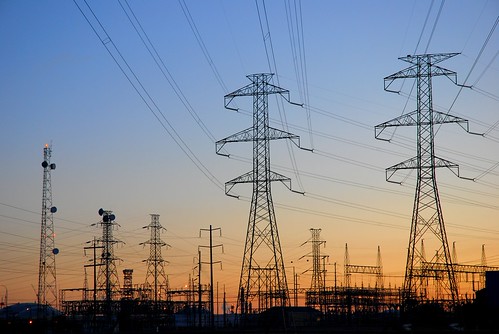I come here before you to seek for answers!
Now that the words “Smart Grid” is in our everyday lives. I would like to better understand how the current “Dumb Grid” works. In this world full of information I have not been able to find satisfactory answers to the following questions regarding the Electricity Grid. Excuse my ignorance!
1- What is the best strategy for the future of power? Is it to generate electricity in each home, or neighborhood, or community; or to maintain the current system where a series of big power plants inject their product into a complex network that distributes the electricity to large geographic areas?
2- What determines the capacity needs of the power plant? Is it the installed capacity in the network (each appliance and circuit in each house, office and factory) or is it the historic average consumption of electricity?
3- Why can’t we have a direct current (DC) grid? Many alternative energy technologies struggle with the conversion from DC to AC (alternative current). Why do we need to use AC everywhere?

What I have learned recently is that the existing network of power plants works under a demand / cost of production basis. The power plant that is cheapest to run is producing 24/7 (Base Load Power Plant); as the demand grows during the day (or the week) additional plants start generating to produce the needed electricity. Therefore creating a different (cost and) price for electricity at different times of the day (or the week).
Will this complex network be needed if (and when) we obtain electricity from the sun or the wind (or any other renewable source)?
The real core of the matter is whereas new alternative energy technologies will flourish in the home or neighborhood scale, or will they replace existing power plants in the power grid? In other words, who will be the pioneer of renewable energy? Will it be the average Joe or the big utility companies?

Regarding the capacity of the power plants:
This question seems simple, but I have found is not as straightforward as it seems.
According to me, there are two "measurements" of electricity in your home, commerce, office or factory: the installed capacity and the actual electricity being consumed.
When you build a house and install the main electricity "box" you have to do so according to a calculation of the power needs for that house. This calculation is based on the number of outlets, appliances, lights and other power consuming devices the house has built into it (or may be able to support). The breaker box in the house reflects the need of each room or appliance for the power capacity (voltage).
The question is: does the power plant need to generate according to the installed capacity of the aforementioned house, or can the power plant generate based on the actual use of electricity in the house? In other words, if we reduce the installed capacity of all the houses in a city, but these houses consume the same amount of electricity as before; will we save any power?
Finally, I am puzzled by the lack of DC alternatives in today’s wind, and solar power generation world. I am aware of the “War of Currents” between AC and DC (won by AC). But I wonder what would happen if today’s technological advances were applied to a DC network with alternative energy as a power source and DC applications everywhere.
I want to apologize for the time gap between my previous posting and this one. It turns out that having a third child, traveling and keeping up with three different types of businesses in three different countries does take time!
Until next week: SHALOM!




No comments:
Post a Comment